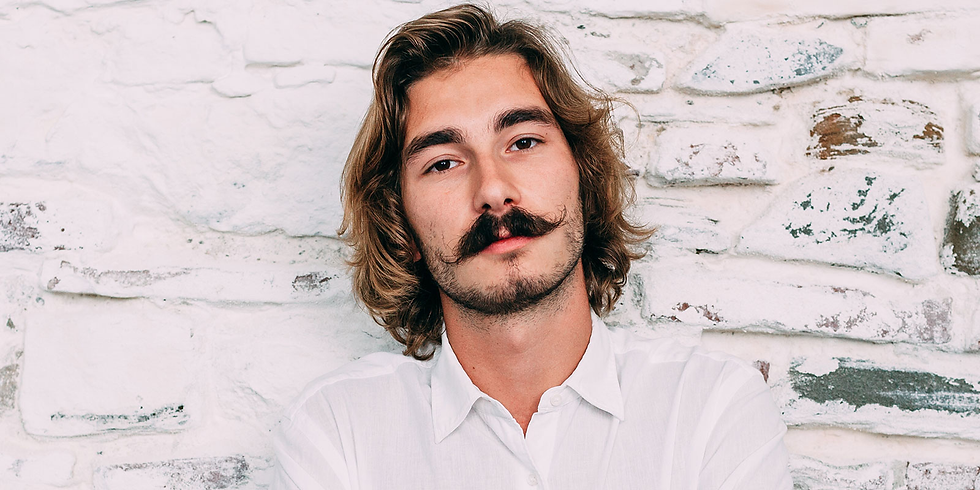Discover PRP Hair Treatments for Lasting Results
- Bisma Jamal
- Aug 21, 2024
- 4 min read
Hair loss is a common concern affecting millions worldwide, impacting self-esteem and confidence. As individuals seek effective solutions, Platelet-Rich Plasma (PRP) hair treatments have emerged as a promising option for those looking to rejuvenate their hair and achieve lasting results. This article explores the science behind PRP In Dubai, their benefits, and what you can expect from this innovative therapy.
What is PRP Hair Treatment?
Platelet-Rich Plasma (PRP) hair treatment is a cutting-edge procedure that utilizes the body's own natural healing properties to stimulate hair growth and improve hair density. The process involves drawing a small amount of the patient’s blood, processing it to concentrate the platelets, and then injecting this enriched plasma into the scalp. Platelets are rich in growth factors that promote cell repair and regeneration.
The Science Behind PRP Hair Treatment
PRP hair treatment works by leveraging the regenerative abilities of platelets to address hair thinning and loss through several mechanisms:
Activation of Dormant Follicles: The growth factors in PRP help activate dormant hair follicles, encouraging them to transition from a resting phase to an active growth phase. This revitalization leads to the production of new hair strands and strengthens existing hair.
Enhanced Blood Circulation: PRP improves blood flow to the scalp, providing hair follicles with essential nutrients and oxygen necessary for healthy growth. Enhanced circulation also helps flush out toxins that may hinder hair development.
Reduction of Inflammation: Inflammation in the scalp can contribute to hair loss. PRP has anti-inflammatory properties that help reduce scalp inflammation, creating a more favorable environment for hair growth.
Collagen Stimulation: Platelets stimulate collagen production, a vital protein that supports the structure of hair follicles. Increased collagen helps strengthen hair and improve its overall quality.
Benefits of PRP Hair Treatment
PRP hair treatments offer several advantages for those seeking to address hair thinning or loss:
Non-Surgical: One of the most significant benefits of PRP therapy is its non-invasive nature. Unlike hair transplant surgeries, PRP does not require incisions or sutures, making it a less intimidating option for many.
Minimal Downtime: The procedure is relatively quick, usually taking between 30 to 60 minutes. Most patients can return to their normal activities immediately after the treatment, with only minor discomfort or redness at the injection sites.
Natural Treatment: PRP therapy uses the patient’s own platelets, reducing the risk of adverse reactions or allergic responses compared to synthetic or foreign substances.
Effective for Various Types of Hair Loss: PRP is suitable for different types of hair loss, including androgenetic alopecia (pattern baldness) and alopecia areata (patchy hair loss). It can be effective for both men and women.
Long-Lasting Results: While individual results can vary, many patients experience noticeable improvements in hair density and thickness within a few months of starting PRP treatments. Ongoing treatments can help maintain and enhance these results.
The PRP Treatment Process
Understanding what to expect during and after PRP hair treatment can help you prepare for the procedure and optimize your results:
Initial Consultation: Before starting PRP therapy, a thorough consultation with a healthcare provider is essential. This appointment allows the provider to evaluate your hair loss pattern, medical history, and determine if PRP is the right treatment for you.
Preparation: On the day of the procedure, a small amount of blood will be drawn from your arm. The blood is then processed in a centrifuge to separate and concentrate the platelets. The scalp will be cleansed, and a local anesthetic may be applied to minimize discomfort during the injections.
Injection: The prepared PRP is injected into specific areas of the scalp using a fine needle. The number of injections and their placement depend on the extent of hair loss and the treatment plan.
Post-Treatment Care: After the procedure, you may experience some swelling, redness, or tenderness in the treated areas. These symptoms typically subside within a few days. It is important to follow any post-treatment instructions provided by your healthcare provider, which may include avoiding certain hair products or activities for a short period.
Results and Maintenance
PRP therapy is not a one-time fix; it typically requires multiple sessions to achieve optimal results. Most patients begin to see improvements in hair density and thickness around 3 to 6 months after their initial treatment. To maintain and enhance results, ongoing treatments are usually recommended. The frequency of these treatments will vary based on individual needs and goals.
Combining PRP Therapy with Other Treatments
For some individuals, combining PRP therapy with other hair restoration treatments can lead to even better results. Options such as topical minoxidil, oral finasteride, or low-level laser therapy can complement PRP by addressing different aspects of hair loss. Consulting with a healthcare provider can help you develop a comprehensive plan tailored to your specific needs.
Final Thoughts
PRP hair treatment represents a promising and innovative approach to addressing hair loss and promoting thicker, healthier hair. By harnessing the body’s natural healing processes, PRP offers a non-surgical, minimally invasive solution for those seeking to restore their hair’s vitality. While individual results can vary, many patients find PRP therapy to be a valuable tool in their journey toward achieving fuller, more youthful-looking hair. As with any medical treatment, consulting with a qualified healthcare professional is crucial to determining the best course of action for your unique situation.







Comments